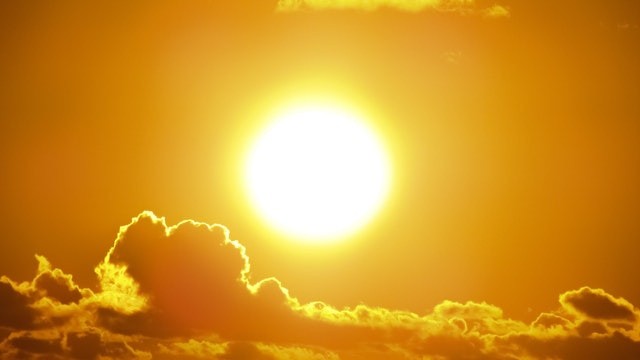About sixty scientists recently requested that solar geoengineering techniques such as stratospheric aerosol injection (SAI), which aims to 'dim' the sun, be temporarily prohibited.
Aerosol particles, which reflect sunlight back into space, are released into the atmosphere by a fleet of planes.
Catastrophic Effects of SAI
SAI may present greater risks than the warming it is trying to stop. To understand the risks, some scientists carried out a risk assessment of this contentious technology.
According to Scitech Daily, climate change could alter rainfall patterns due to less evaporation from the Earth's surface as a result of cooler Earth.

The precise form of these effects will depend on how SAI is utilized, but this might have rippling effects throughout the world's ecosystems. As a result of poor coordination in the emission of aerosols, excessive rains in some areas could lead to the spread of illnesses.
Natural disasters could become even more devastating as a result of SAI. Earth's surface could be naturally cooled by ash from a volcanic eruption, such as that of Iceland's Eyjafjallajökull volcano in 2010. To avoid overcooling one hemisphere and causing extreme weather patterns, SAI would have to be quickly re-adjusted (not an easy task).
Nuclear war may seem like a remote possibility, but global nuclear capabilities are increasing, and terrible political decision-makers are many. SAI might exacerbate a "nuclear winter," in which global temperatures plummet for years due to soot clouds from nuclear-triggered fires.
What Could Trigger a Termination Shock?
A "termination shock" could occur in the event of a tragedy that permanently disables SAI systems. Even with a SAI system hiding global warming, the planet could warm by several degrees within decades if it were suddenly removed.
You may think of a number of ways a SAI system could be compromised. The Earth's magnetic field might be knocked out by an enormous outpouring of solar matter, which is linked to a solar flare. SAI's aviation and satellite systems could be harmed by this.
It would also be a fallacy to hold out hope that calamities will be avoided entirely in the next century. The probability of a nuclear conflict between Russia and the United States is estimated at 0.9 percent every year by one model. Space weather occurrences can range from 0.46 percent to 20.3 percent a year, according to estimates.
SAI may potentially be a target for cyberattacks. In 2019, a ransomware attack against Colonial Pipeline's computer systems was carried out by a group of hackers known as DarkSide. Operators were obliged to pay DarkSide £3.7 million to reactivate their systems because they feared widespread gasoline shortages across the US, as per Yahoo News.
A small coastal Australian region called Maroochy had an automated sewage system that leaked hundreds of thousands of liters per day into the sea in the year 2000. A single disgruntled ex-employee of the business that built the system was the source of these "leaks."
With an international infrastructure system designed to hide the effects of climate change, there will be more debate, and the payoff may be even greater than with a local sewer system.
Messy International Politics?
Of course, SAI could be utilized appropriately in the future. However, SAI's concealed dangers could be released if just one thing goes horribly wrong - like an unexpected solar storm. In general, predicting SAI's average or "most likely" results is a good idea. SAI's worst-case scenarios, on the other hand, may be catastrophic.
In most SAI models, ideal conditions are assumed, where SAI is deployed logically and meticulously by a group of cooperating countries. International politics, however, is a muddled mess. Without international agreement, a tiny number of countries who favor a cooler Earth might begin using SAI. SAI's disorganised use is yet to be deeply studied.
If there was a perfect world, people in charge of SAI would guarantee that its infrastructure is able to withstand natural disasters, is co-operated amongst countries, has substantial back-ups, and is continuously monitored during the period of its deployment (likely decades and potentially over a century).
In order to avoid becoming reliant on SAI eternally, humans must reduce greenhouse gas emissions to net zero and remove excess emissions from the environment.
This form of government, on the other hand, would be naive. Take the epidemic as an example. When it comes to COVID testing and vaccine development, policymakers have shown themselves to be unreliable decision-makers. Herd immunity is a myth. Imagine the strife that would ensue if the Earth were covered with a chemical mask.
Could become increasingly politicized, with changes in the use of SAI driven by politics rather than research. SAI could be used by the fossil fuel industry and those who support it to put off the adoption of renewable energy sources.
Related Article : Bill Gates Wants to 'Dim the Sunlight' in Effort to Counter Climate Change, Here's How
For more news, updates about global warming and similar topics don't forget to follow Nature World News!
© 2025 NatureWorldNews.com All rights reserved. Do not reproduce without permission.





